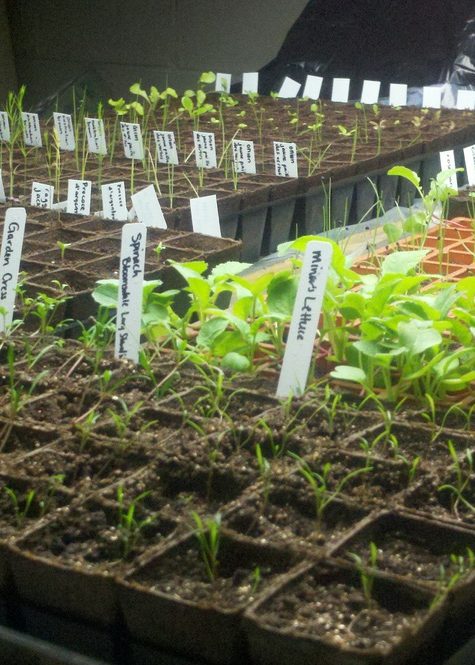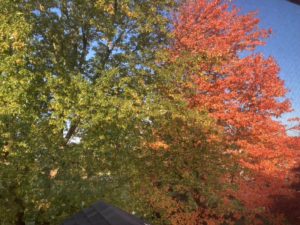The Science of Gardening
Photosynthesis
How do plants make food?


“Photo-“
“Light”
“Synth-“
“Put together”
Photosynthesis is the process by which plants use light to put together other substances.
What do plants make?
- Sugars – for food, and for making starches
- Starches – for food storage
- Cellulose – for cell wall structure
- Protein – for plant structure
Plants cannot create themselves, though. Every plant must originate from another plant, just as all life must come from other life. The seeds (or sometimes spores) that form plants each have life from another plant inside, and when given the right conditions, these seeds will sprout and grow.
It is the growth of the plant that depends on the process of photosynthesis.
Absorbing Light
Photosynthesis takes place in the tiny, microscopic part of the plant cell known as the chloroplast. Chloroplasts contain colored compounds that absorb different colors of light. The most well-known of these “pigments” is chlorophyll. Chlorophyll makes plants green in color. There are two types of chlorophyll, called chlorophyll a and chlorophyll b.
What colors of light do plant pigments absorb?
- Mostly red and blue, although some pigments also absorb blue-green light
What other pigment colors do plants have in their leaves? An easy way is to consider fall-colored leaves. Leaves change color in the fall because the green of the chlorophyll is pulled back into the tree, leaving the other colors on display (reds, yellows and oranges).

 Photosynthesis, in simpler terms.
Photosynthesis, in simpler terms.
Making Sugar
Photosynthesis involves plants using water and carbon dioxide (the same gas that humans and animals breathe out) to make oxygen and sugars. The energy used to break down the chemical bonds of water and carbon dioxide and form oxygen and sugar comes from light.
Once the plant has made sugar, it can then use other chemical processes to create other substances, including proteins, starches, and more complex sugars.
Air, water and light are not the only thing plants will need, however. There are still some substances that (most) plants need from the soil in which they grow.
What is a “pigment”, anyway?
Pigments are substances that “impart color to other materials”, or “a coloring matter in animals and plants especially in a cell or tissue”.
(Merriam-Webster’s Collegiate Dictionary, 11th edition)
What’s the difference?
Different plants actually require different types and amounts of soil nutrients. Some plants need lots of light, while others tolerate very little. Some require a great deal of compost, while others can survive in very rocky or sandy places.
When thinking about a specific kind of plant, consider where it naturally grows: A desert? Rainforest? Floor of a temperate forest? A sunny field?
Plants thrive in their native environments because they naturally receive what they need to grow there. In non-native places, they may need some help.
What does fertilizer do?
If plants can just use air, water and light to make food, why do they need fertilizer?
It is in making other components that plants use minerals from the earth. Fertilizer provides such minerals– phosphorus, potassium, nitrogen and more– that plants need to make new cells, flowers, seeds and other parts.
In rich, healthy soil, plants may be able to find everything needed without additional fertilizer. But if there is a lack of any specific nutrients in the soil, the plant will not be able to stay healthy and thrive.
Plants can be fed the needed nutrients through adding compost (broken down organic matter), or through adding fertilizers. This can be very important if you are growing a plant outside of its native environment, or in soil that lost some of its nutritional value when other plants grew there.
